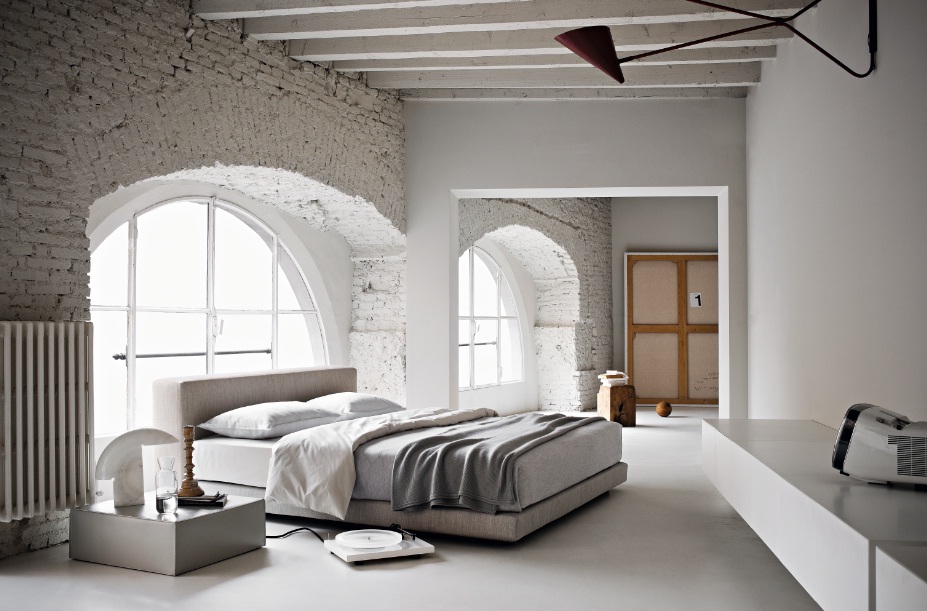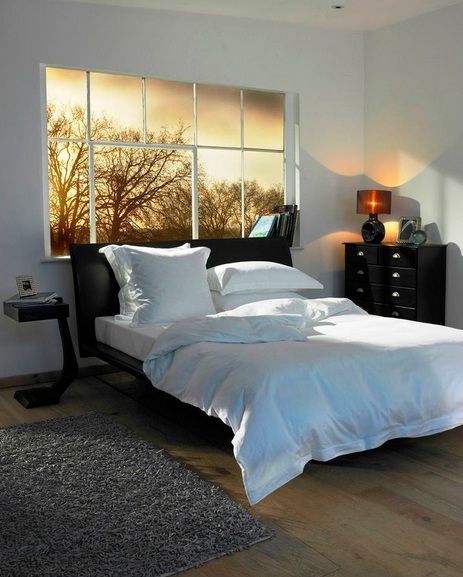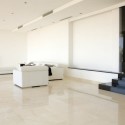Décor & Design
Image above: Ivano Redaelli (available at Design Concept in Marbella).
Hand-finished luxury and sophistication from Italian brand Ivano Redaelli.
Bedding
Serene Style for Quality Sleep
Most people appreciate the importance of getting a good night’s sleep. Many of us, however, fail to put our best intentions into practice, at least on a sufficiently regular basis. It may sound like stating the obvious but we sometimes overlook the fact that sleep not only makes us feel refreshed and in a better mood but it also helps us process and recall information, eases the stress of everyday pressures and, most importantly, can reduce health risks, benefiting both the mind and body. In short, sleep quantity and quality play a key role in the broad spectrum of our day-to-day – and evening – lifestyles.
Heading into the warmer months of the year means we have to reorganise our bedding so that we are more comfortable when we sleep. The duvets are stored away and the lighter bed covers adorn our beds. Neutral colours such as white, creams, light grey and beige are popular as they give a luxurious hotel feel, making the room feel serene, airy and sanitary – the perfect place to retreat to. If you like a flash of colour, a colourful throw at the foot of your bed makes a wonderful accent and completes the look. Neutral-coloured bedding can also compliment a patterned or colourful wallpaper, bedside cabinet or rug, toning down the busyness of a room.
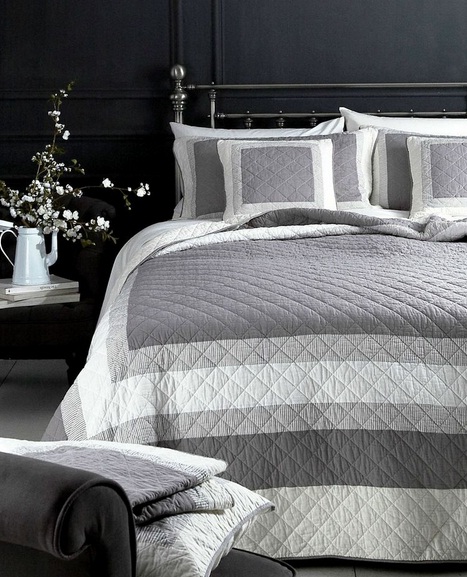
Marquis And Dawee grey quilted cotton bedspread
So how do you choose the right bedding for you?
Natural fibres such as silk, flax and cotton are unique in their forms, which make them attractive aesthetically. Also, being porous, they are very comfortable in warm temperatures – allowing your skin to breathe and giving you the best environment for sleep. It is always advisable to remove them quickly after washing, or dry them rapidly, to avoid creasing as natural fibres do have a tendency to scrunch up, unlike synthetic fibres such as polyester or acrylic.
Cotton has always been a popular choice for bedding and it comes in different forms. Long staple cotton is the best quality as it is shiny, supple, durable and soft to the touch. Linens such as Egyptian or Pima are long staple cotton.
Intermediate staple cotton usually has a maximum thread count of around 230, which is good quality but may not be as radiant and svelte as long staple cotton. Short staple cotton is rarely found in bedding as it is not very durable and is quite rough.
For those who are more ecologically conscious, organic cotton is not genetically modified and is farmed in a way that does not cause a serious impact on the environment, as it is not cultivated by non-organic fertilisers for more than three years.
There is also combed cotton, which is only applicable to the highest quality cotton, that which is long-lasting and possesses a high thread count. Combed cotton cleans the yarn and makes it finer and glossier.
Linen absorbs moisture and keeps you cool over the summer months. It helps to repel insects, is hygienic and becomes softer over time. It is a strong fabric but can crease quite easily.
Silk is also very absorbent and insulates you in the colder months while cooling you down in the warmer months. Much attention needs to be paid when washing silk as it is extremely fragile.
Artificial fibres are derived from cellulose or plant proteins and are usually identified on labels – such as rayon or viscose. They are generally more resistant and possess the same qualities as natural fibres, but take care as they are more susceptible to shrinkage when washed.
Blends consist of two or more different types of fibres, with the highest percentage usually dominating the quality and look of the fabric. So for example, a blended sheet that consists of a high percentage of cotton linen will be slightly stiff in its form with a natural sheen and will be strong and less likely to shrink than a fabric made of 100 per cent linen.
Thread count has always been considered an important factor when choosing bed linen but the higher the thread count does not necessarily reflect its quality: it only signifies how many threads are woven within a square centimetre. There is an element of misinterpretation with thread count as some manufacturers will state a higher thread count because they entwine several plies (or fibres) together to make one thread and count each fibre as part of their thread count, whereas other manufacturers will count one thread as being just one. The most long-lasting fabrics are made with single ply construction, resulting in softer and more lightweight fabric. Those made with multiple ply yarns will usually weigh more than those made with single yarns.
Another important factor to consider when choosing bedding is the type of weave. A plain weave is most commonly found in bedding because it is very durable due to the way each yarn crosses over another. Bedding with plain weave is usually crisp and soft to the touch.
Twill weaves are a little more expensive and also make strong fabric due to the diagonal rib. The fibres stick out on a twill weave, making the fabric extremely soft and easy to brush down.
Sateen weaves usually have a higher thread count, producing a denser fabric that is shiny and silky. Make sure that the thread count is high with sateen weaves, as they do otherwise have a tendency to pull.
Patterned weaves are trickier to produce but are long-lasting – even if they come with a high price tag. There are two types of fabrics made with the patterned weave: Dobby is cheaper and less complicated in its design, whereas Jacquard is more technical and uses a better quality yarn, making it more expensive.
So, when choosing bedding, quality is determined by many different attributes. The threads of the fabric should not be moveable so, when you scratch it, the threads hold their position. Colour in the material should be consistent throughout the fabric and should not have worn away in a fold or crease, which would suggest that a low quality dye was used. If there is any powder on the material it can mean that the fabric has been over-sized and is of inferior quality.
Natural Sleep Patterns
Robert Lancaster-Gaye, managing director of UK-based Best Bed Linen (www.thebestbedlinenintheworld.com), offers some helpful suggestions on how to achieve the “perfect sleep setting”…
• Bed linen made from 100 per cent cotton will ensure a much more satisfactory night’s sleep. For optimum comfort and care the ideal thread-count is 400 percale as it offers the ultimate in softness, whiteness, weight and durability.
• Never use a second-hand mattress.
• Choose a pillow that is both soft and supportive for the head and neck – for example, a mix of feather and down.
• Consider blackout curtains to prevent being woken prematurely.
• Our body temperature drops during sleep so ensure your duvet is warm enough for the winter months to avoid waking in the night.
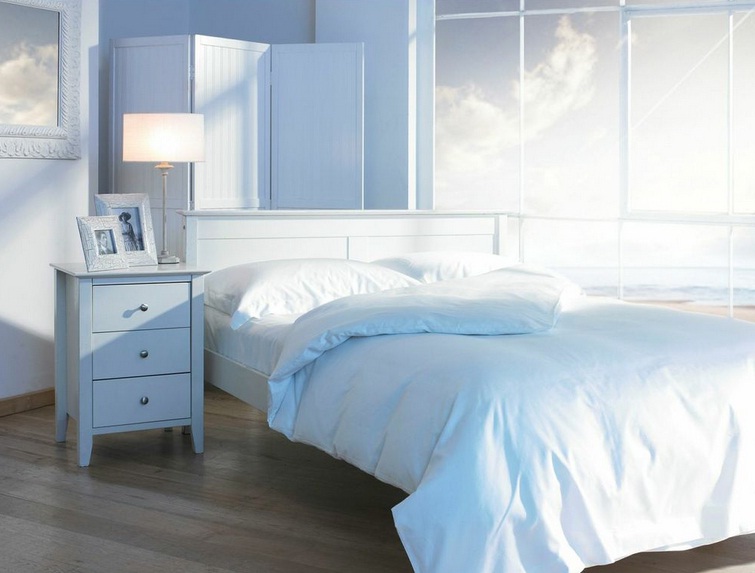 Best Linen bedding collection
Best Linen bedding collection
And for pillows…
• Replace pillows every two years once they’ve lost their height and have become misshapen and discoloured. Research shows that an old, unwashed pillow can contain up to 10 per cent of its own weight in dead skin cells and dust mites. However, the life of a pillow can be extended by using pillow protectors.
• A good pillow should be supportive and hold the head in the correct position, in alignment with the shoulders and spine – the same position as if standing. The pillow should be tucked into the neck and shoulders to ensure the head is fully supported.
• If you sleep on your side, a thicker pillow or two thinner ones are recommended.
• There is a wide range of pillows available: goose down, duck, down, feather, microfibre… and they come in a variety of shapes and sizes to suit all personal tastes. Pillows are subjective, so choose one that suits your sleep requirements.
Best Linen
Body Comfort the Key
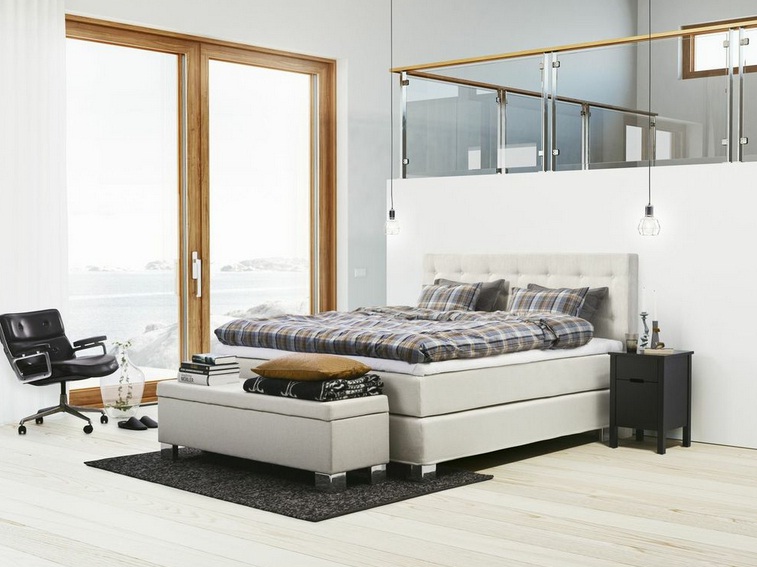
Jensen Beds
One innovation that “changed the perception of sleep” was the revolutionary Jensen Zone System, presented on the market in 1998. The system provides proper support for the entire body when at rest, including the curve of the back, in combination with a soft shoulder zone, “which is the key to an optimal sleep experience”.
According to Jensen, the system is based on self-evident and natural principles. “Most people are broader in the hip and shoulder areas and narrower and heavier around the waist. Given that the main purpose of the mattress is to effectively support the body, the division into zones provides more equal and comfortable support where the shoulders and hips sink deeper into the mattress, with firmer support for the narrower and heavier waist area. The effect is the same irrespective of whether you lie on your back or on your side.”

If the mattress is too hard, explains Jensen, the hips and body do not sink into the mattress, which results in a lack of support. “If the mattress is too soft, the body sinks too far into the mattress, as it would in a hammock. The spine becomes unnaturally curved. The perfect mattress provides an even and comfortable support for your body. The hips and shoulders sink into the mattress, while at the same time perfectly supporting your waist and lower back.”
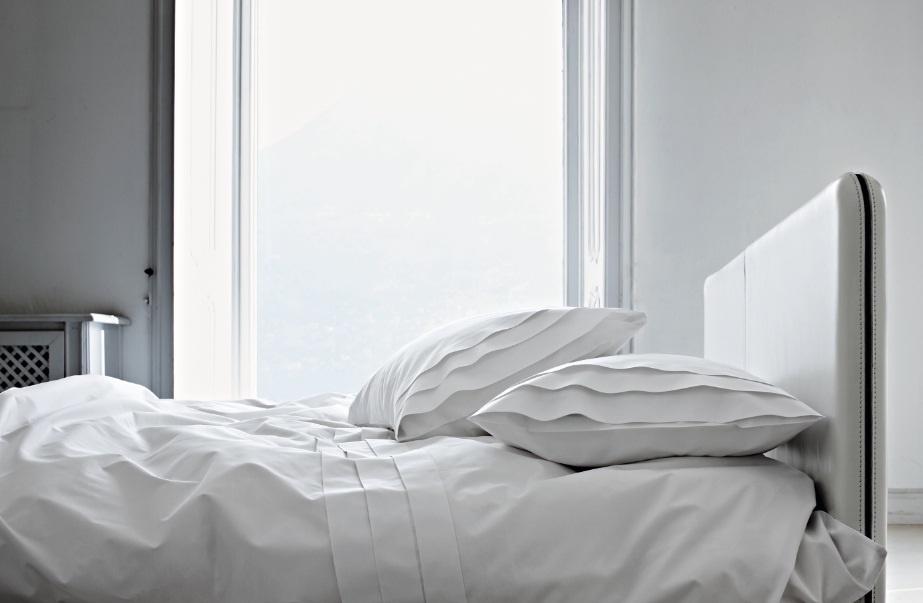
(La Maison Blanche/ Ivano Redaelli)
La Maison Blanche chic… available in Marbella from: www.designconcept-marbella.com
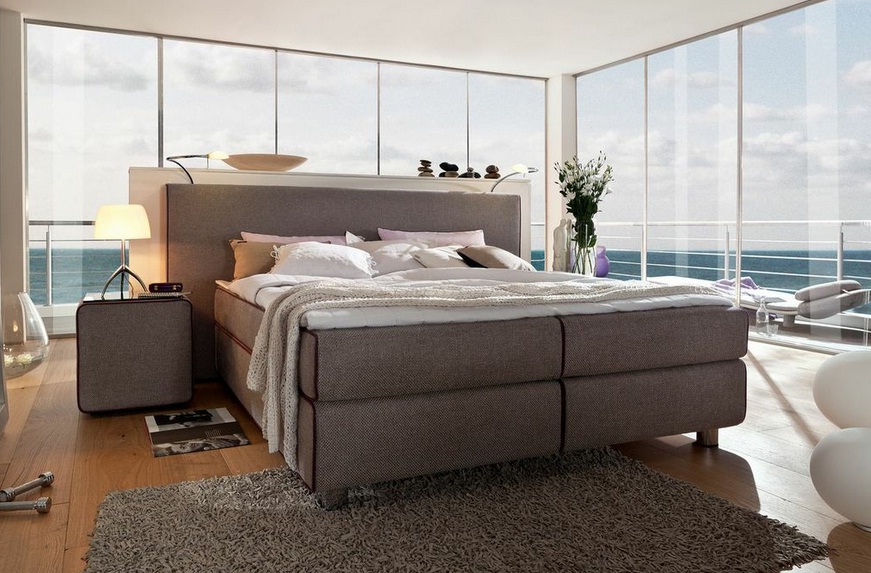
(Imperial Furniture)
Adding a dreamy touch to your home.

(Fendi Casa Mazarin)
Defined by sumptuous shapes and large sizes, the Mazarin bed from Fendi Casa has been created in soft French blue velvet and contra-distinguished by an imposing bedstead, finely handcrafted with a symmetric trapeze design – contemporary geometry that is described as being reminiscent of the faces of a stone. Available at Gunni & Trentino and Patricia Darch.

(Heritage Collection)
Heritage Collection’s Four Seasons model is a contemporary interpretation of the style and elegance of a traditional bed. The wide leather headboard has a marked and comfortable profile characterised by extensions expanding outwards, while the surface is manufactured with a hand-crafted quilted upholstery and covered with delicate and fine pleats.

Noël has been offering home linen embellished with fine and elegant embroidery since 1883, using traditional embroidering techniques. The Place d’Iena boutique in Paris is the exclusive showcase of Noël’s home linen collections.
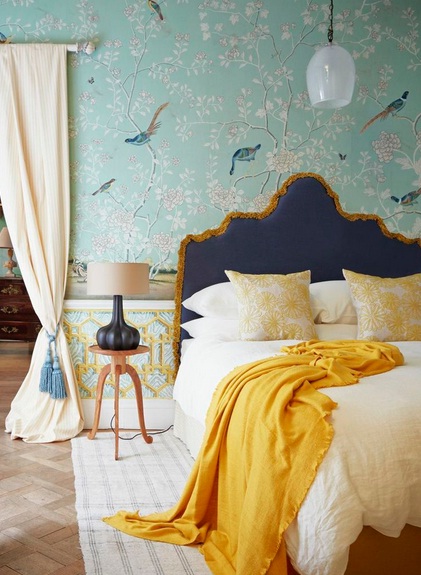
(Ensemblier)
New British furniture brand Ensemblier produces customisable headboards, bringing traditional craft to contemporary bedrooms. The range includes the “Fionn” headboard, inspired by well-preserved 18th century furniture in the stately homes of Britain and featuring contrasting blue linen with a yellow brush fringe.
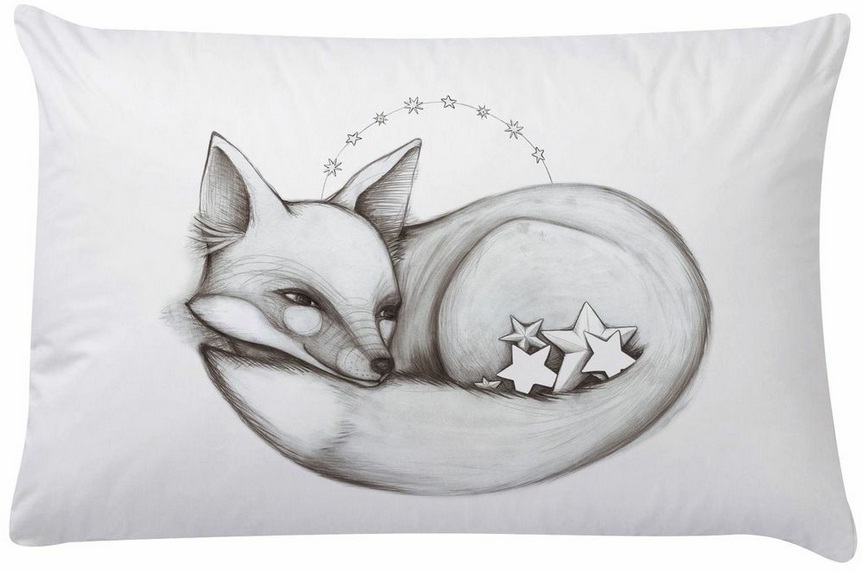
(Flossy Pillowcase)
Quintessentially Australian, these pillowcases feature the work of illustration artist Flossy-p… drawings of native flora and fauna on white cotton. The most popular product in her range is the “Giant Wombat”: an image of an oversized wombat and a girl, “meeting in a perfect moment of peace and mutual respect, heads resting together, eyes closed, beneath a tiny yellow moon”.

(P&P Baby Quilt)
Painted and Patched’s limited edition baby quilts are hand-made in an artisan studio using British silks and cottons – including peace silks and hand-dyed organic fabrics – and each one is filled with an eco bamboo wadding.

(Risenn)
The Risenn range of cushions features different textures and patterns, and a small palette of colours, while “celebrating the simplicity of square shapes”.
Decor and Design feature by English magazine Home & Lifestyle


